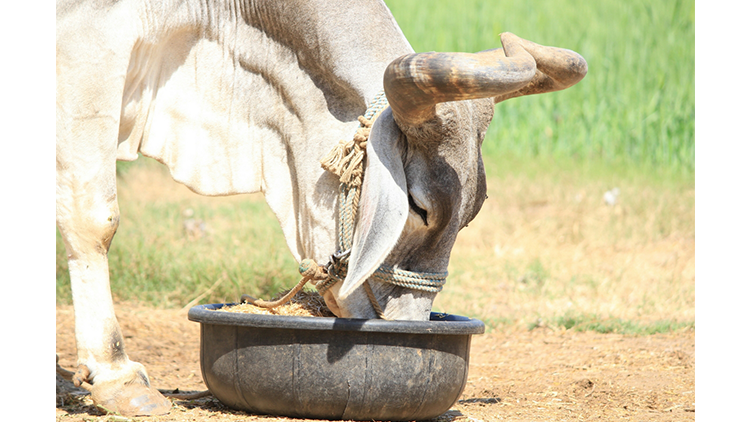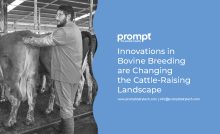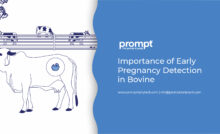Effective Practices of Ration Balancing For Heifers and Cows


Heifers and cows must receive sufficient feed and fodder that helps them in maintaining health and stamina. The ration should be fed in a way that the cows do not lose or gain too much weight, lowers the risk of nutritional deficiency or metabolic disorders, and maximizes production. A well-balanced, nutritive ration must be a composition of concentrates and wilted leguminous fodder along with ample supply of clean drinking water. Moreover, there’s a marked increase in the feed requirement of pregnant and lactating cows, and hence, they must be given surplus feed to minimize weight loss and improve future reproduction. Knowing the importance of animal husbandry and capitalizing on an efficient cattle management software is one of the keys to sustainable farm development. Beneath, we list some effective feeding practices for heifers and cows and their continued growth.
- A systematic approach must be designed to meet nutrition and growth target that affect calving age and future productivity. The diet program must be devised while considering body size, housing, weather, topography, reproduction stage, and productivity level.
- Get the feed ingredients tested regularly by a dairy expert, animal nutritionist, or farm science centers to ensure all ration components are of good quality and unspoilt.
- Feed forage diet to cows as it helps in reducing acute and sub-acute rumen acidosis produced from high concentrate diet.
- A gradual change in the feed should be introduced, say over the period of 7 to 10 days, if at all. Doing so helps the cows in getting acquainted with the new food without abrupt alterations.
- Consider appetite of each cow and accordingly increase the amount of the concentrate steadily, say 500g to 700g per head per day.
- A cattle management software can help you design a consistent feeding schedule and hence, it becomes easy to ensure continuous access of feed to the cows.
- Fresh feed is an excellent source of nutrition. Use propylene glycol or feed additives to prevent fatty liver disease and ketosis.
- Any equipment like buckets, bottles, artificial teats, and feeding pen must be adequately cleaned after use.
- Cows in early lactation tend to lose Body Condition Score (BCS). However, it should be limited to 1 point during the first trimester of gestation and must be gradual. Make sure the cows are neither under-conditioned nor overly fed.
- A score chart with corresponding lactation stage is shown below which must be referenced while assessing BCS of the cows. The ideal BCS of any cow must be anywhere between the given range, and appropriate corrective measures must be implemented otherwise.
1.) The moisture content in all feeds is different, and expressed regarding voluntary Dry Matter Intake (DMI) indicator to determine if cows are receiving enough nutrients or not. A nutritive ration helps achieve the DMI target through good quality feed and fodder. Dry matter can be obtained from roughages both green and dry, and concentrates like oil cakes, grains, mineral mixtures and salt. Each category of cattle requires different DMI based on green forage, concentrate in feed, lactation stage, and environment. A table is drawn below indicating DMI requirement by each category of cattle.
Roundup
Did you find our blog helpful for dairy farmers like you? Feel free to share on Twitter or Facebook by using the share buttons! And for more hacks on improving dairy farming, check out our other blogs.
Recent Posts
One Milking Parlour, One Promise: How a Father’s Decision Gave His Daughter the Gift of Time
In the rich, green fields of Punjab, dairy farming is a way of life. Across…
Increase Your Farm’s Profits With Budget-friendly Milking Machines
For several years, dairy farmers have used traditional methods to collect milk from cows. However,…
Innovations in Bovine Breeding are Changing the Cattle-raising Landscape
Animal husbandry is an age-old practice that shaped the country's dietary culture across regions. As…
The Impact of Temperature on Milk Quality: Challenges Faced During Summer
Milk quality is a crucial factor in manufacturing dairy products like ice cream, UHT milk,…
From Corporate to Cattle Management: Shrikant’s Visionary Approach to Dairy Farming
Embarking on a journey that combines tradition with innovation, Shrikant, once an IT engineer, chose…
From Farm To Table: The Journey of Milk in India
The stellar role of Operation Flood since its launch played an integral part in making…


